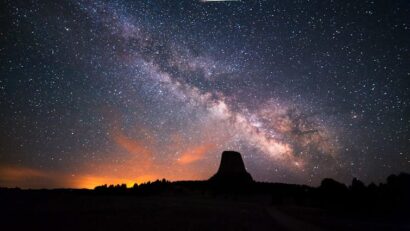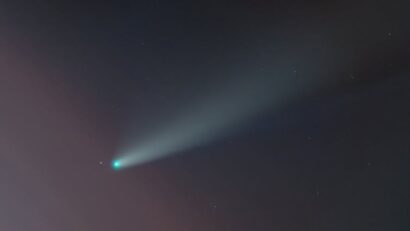
The Eta Aquariid meteor shower is about to peak and could be the best this century – here’s how to catch it
Meteors – commonly known as shooting stars – can be seen on any night of the year. But some nights are better than others.
As Earth moves around the Sun, we encounter streams of dust and debris from comets and asteroids. That debris gives birth to “meteor showers” – times when the number of shooting stars you are likely to see increases dramatically.
Currently, we are passing through the outskirts of one such debris stream, left behind by Halley’s comet. It creates the Eta Aquariid meteor shower, one of the best visible from the southern hemisphere. Every year, when Earth reaches this point in its orbit, you can see the Eta Aquariids in the morning sky.
This year’s display promises to be extra special. The peak coincides with a new Moon, meaning skies will be extra dark in the hours before dawn – perfect conditions to watch fragments of a famous comet rain down. There are even hints the shower might be more “active” than usual.
Fragments of the most famous comet
Halley’s comet (1P/Halley by its official name) orbits the Sun every 76 years or so, and has spent thousands of years on its current path.
Every time it swings through the inner Solar System, the comet sheds dust and gas. This dust has slowly spread through space, shrouding the comet’s orbit in a broad swathe of debris.
Earth runs through that debris twice per year, giving birth to two famous meteor showers. In October, we get the Orionid meteor shower, visible from both hemispheres and relatively well known.
But the better of the two showers from Halley’s debris peaks in early May – the Eta Aquariid meteor shower. Earth begins encountering that debris in mid-April, and then spends approximately six weeks traversing the broad debris stream left behind by the mighty comet.
For much of that time, Earth passes through the outskirts of the stream, and the number of meteors produced remains low. But for around a week centred on May 6, Earth moves through the densest part of the stream, and the Eta Aquariids reach their peak.
How can I watch the meteor shower?
The Eta Aquariids are actually one of the best meteor showers of the year, but are relatively poorly known for a simple reason – they are best seen from the southern hemisphere, and are very hard to observe from locations north of the equator.
The reason is that in northern locations, the Eta Aquariid radiant (the point in the sky from which the meteors appear to radiate) does not rise until it is already morning twilight. As a result, all but the brightest meteors get lost in the rising daylight.
Southern observers are more fortunate. For most Australian locations, the radiant – located in the constellation Aquarius – rises at around 1:30am to 2am local time. This gives us several hours before dawn to observe the spectacle.
A general rule of thumb when observing meteor showers is the higher in the sky the radiant rises, the better the display will be as your location on Earth is turned into facing the oncoming shower of cometary dust.
The first hour after radiant rise will likely not produce many meteors. It is still worth staring skyward though, as the few meteors you do see will be crashing into the atmosphere at a very shallow angle, allowing them to streak from horizon to horizon. These are known as “earthgrazing” meteors.
An Eta Aquariid meteor captured in Wyoming in 2013.
David Kingham/Flickr, CC BY-NC-ND
As the radiant climbs higher, so, too, will the number of meteors you observe. At their peak (on the morning of May 6th), in the hour or two before dawn, the Eta Aquariids could easily produce 20 to 30 meteors per hour. Similar rates should be visible for a couple of mornings either side of the maximum, making the weekend of May 4 and 5 a perfect time to do some morning meteor spotting.
However, meteors don’t come at an even rate. You can wait 15 minutes and see none, then four may come along at once. So remember to wrap up warm, get comfortable and gaze towards the eastern sky as you relax to enjoy the show.
An extra special year?
The Eta Aquariids are always a fabulous autumn treat for observers in Australia, but this year promises to be extra special. First, the skies will be dark thanks to a new Moon, making meteors easier to spot.
But there’s more. Scientists modelling the behaviour of the Eta Aquariids over the past few decades have found tantalising hints that this year could see significantly enhanced rates. In fact, they suggest the 2024 Eta Aquariid meteor shower could prove to be the strongest of the entire 21st century.
Predicting the activity of meteor showers is really hard, however. Other researchers have argued this year might just be “business as usual”.
Even if the latter is true, this is still an excellent meteor shower to try to catch. With perfect conditions, and the peak falling on the morning of May 6 (a public holiday in Queensland and the Northern Territory), it’s the ideal time to plan a weekend trip to the country – to settle down somewhere dark, and wake up to spend a few hours enjoying a display of natural fireworks before watching a beautiful autumn sunrise. What’s not to love? Läs mer…
